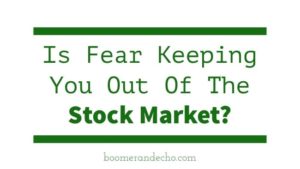Markets have reached all-time highs so frequently that investors are understandably nervous about an upcoming crash. The problem is, nobody knows when a crash might hit, if ever, or how severe it might be if it does occur. Stocks may continue to go up for a few years, or maybe go sideways for a while, or we might suffer a small correction of 10-15 percent before the next bull market begins.
The tech bubble and financial crisis are still fresh enough in our minds to convince investors that declines of 40-50 per cent are normal, when in fact these were major black swan events that perhaps we’ll never see again.
Investing at all-time highs
Let’s say you’re a nervous investor who decided to get out of the stock market at some point in the last 10 years, whether due to Europe, Brexit, Trump, or simply because the markets were looking “expensive.” What’s the cost of waiting for a correction? It turns out to be quite high.
“Far more money has been lost by investors preparing for corrections, or trying to anticipate corrections, than has been lost in corrections themselves.” – Peter Lynch
The Cogent Advisor blog looked at U.S. investment returns over the period 1927 through 2016. That’s 91 years, or 1,092 months. The average monthly return was 0.95 per cent. But when they removed the returns from the best performing 91 months, the remaining 1,001 months provided an average return of virtually zero (0.1 per cent). In other words, 8.5 per cent of the months delivered almost 100 per cent of the return.
Their takeaway: Even if you believe the probability of a correction is high, it’s far from certain. And when the correction doesn’t happen, the expected opportunity cost of having waited is much greater than the expected benefit.
The Crash That Never Came
One reader who I’ll call Jason emailed me and confessed that while he used to invest in index funds he got nervous after Trump’s election and moved everything to a full service wealth management firm last year. He didn’t say in the email, but I can imagine he stressed this concern with his new advisor, who placed him into a conservative portfolio aimed to provide downside protection in the event of a crash.
Here’s Jason, one year later:
I just took a look at the past 12-month performance and it was 3 per cent vs the market of ~13 per cent. I have a sinking feeling I made a mistake and should move it back to self manage using index funds.
I sent my advisor a few questions and basically got the answer that they protect the downside, and have a lower risk targeting 4-6 per cent average over five years.
I still feel nervous, but at age 42 I think I should be more in the market. We have been at all-time highs for a while so I am torn between a bear market that may start now and the downside protection would be warranted. That said, maybe not.







